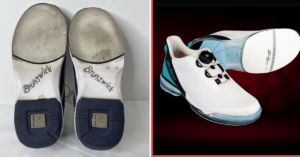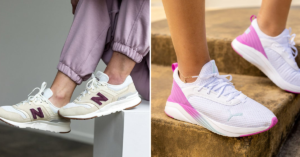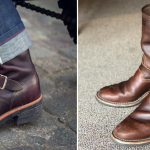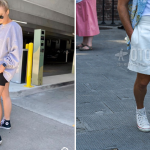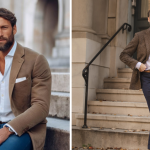Sustainable Fashion focuses on creating clothing in a way that is environmentally friendly and socially responsible. This means considering the entire lifecycle of a garment, from the sourcing of materials to the treatment of workers in the supply chain. By choosing Sustainable Fashion, consumers can support brands that are committed to reducing their impact on the planet and promoting ethical practices in the industry.
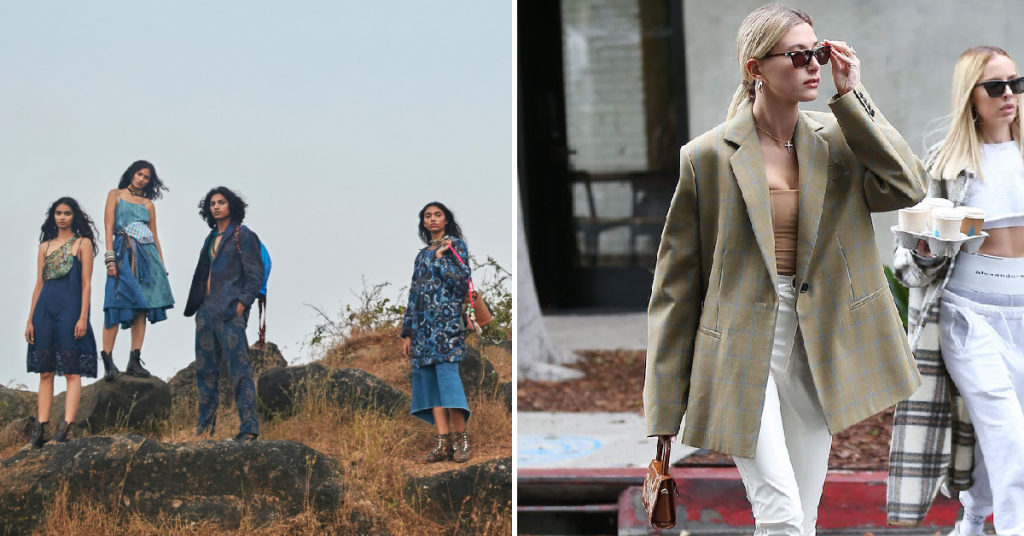
In recent years, the fashion industry has faced increasing scrutiny for its contribution to environmental degradation and exploitation of labor. Sustainable Fashion represents a shift towards more conscientious consumption, encouraging people to be mindful of the consequences of their clothing choices. By raising awareness and advocating for change, the movement aims to create a more sustainable and ethical future for the fashion industry.
Benefits of Choosing Sustainable Fashion
When you opt for sustainable fashion, you are actively participating in reducing environmental harm by supporting brands that prioritize eco-friendly materials and ethical production practices. By choosing clothing items that are made to last longer and withstand multiple wears, you are contributing to the reduction of waste in the fashion industry. This not only helps in conserving resources but also minimizes the carbon footprint associated with the production and disposal of fast fashion garments.
Furthermore, embracing sustainable fashion allows you to align your personal style with your values, creating a sense of authenticity in your wardrobe choices. Choosing pieces that are ethically made and environmentally conscious can also inspire others to reconsider their shopping habits and make more sustainable choices. Embracing sustainable fashion goes beyond just wearing clothing – it is a powerful way to advocate for a more responsible and thoughtful approach to consumption in the fashion world.
Understanding the Environmental Impact of Fast Fashion
Fast fashion refers to the rapid production of inexpensive clothing that quickly moves from the runway to stores to meet current trends. This high-speed, low-cost model encourages frequent purchases and disposal of clothing items. As a result, the fashion industry generates a significant amount of waste, with discarded garments ending up in landfills. The production of fast fashion also contributes to high levels of water consumption, chemical usage, and carbon emissions, further exacerbating environmental challenges such as water pollution and climate change.
The environmental impact of fast fashion extends beyond the production stage. The transportation and distribution of these garments globally contribute to greenhouse gas emissions, while the use of synthetic materials in many fast fashion items adds to microplastic pollution in oceans and waterways. Additionally, the prevalence of unethical labor practices in the fast fashion industry raises concerns about social sustainability, highlighting the need for a more transparent and responsible approach to garment production and consumption.
Identify Sustainable Fashion Brands
Identifying sustainable fashion brands can be a daunting task, especially with the rise of greenwashing in the industry. When looking for truly sustainable brands, it is essential to first examine their materials. Opt for brands that use organic, recycled, or upcycled materials in their production process. Additionally, pay attention to certifications such as Global Organic Textile Standard (GOTS) or Oeko-Tex Standard 100, which ensure environmentally and socially responsible practices. Transparency is key when identifying sustainable fashion brands. Look for companies that are open about their supply chain, production processes, and labor practices. Brands that prioritize transparency are more likely to be committed to sustainability from start to finish.
Another way to identify sustainable fashion brands is to look for evidence of fair labor practices. This includes ensuring that workers are paid fair wages, have safe working conditions, and are treated ethically. Brands that are certified by organizations like Fair Trade USA or meet the standards set by the Fair Wear Foundation are more likely to prioritize ethical labor practices. Additionally, consider the brand’s commitment to social responsibility and community engagement. Brands that give back to communities, support local artisans, or donate a portion of their profits to social causes are often more aligned with sustainable values. By considering these factors, you can make informed choices and support brands that are truly committed to sustainability.
Tips for Building a Sustainable Wardrobe
When aiming to construct a sustainable wardrobe, start by reassessing your current clothing collection. Carefully examine the pieces you already own, identifying items that you genuinely love and wear frequently. By focusing on quality over quantity, you can reduce the urge to constantly buy new clothing and instead invest in versatile, long-lasting pieces that align with your personal style. Consider classic staples like a well-fitted blazer, a pair of high-quality jeans, and a timeless white shirt, as these items can be mixed and matched to create various outfits for different occasions.
Additionally, opt for sustainable materials such as organic cotton, linen, and Tencel when adding new pieces to your wardrobe. These fabrics are not only eco-friendly but also durable, ensuring that your clothing lasts longer and reduces the overall environmental impact of your fashion choices. Look for brands that prioritize ethical production practices and transparent supply chains, supporting companies that value fair labor conditions and sustainable manufacturing processes. By making mindful choices and gradually transitioning to a more sustainable wardrobe, you can contribute to a greener and more ethical fashion industry.
Incorporating Second-Hand and Vintage Pieces into Your Style
Adding second-hand and vintage pieces to your wardrobe can infuse unique character and charm into your style. By incorporating these pre-loved items, you not only stand out from the crowd but also contribute to a more sustainable fashion ecosystem. Vintage clothing often carries a story of its own, showcasing the craftsmanship and design sensibilities of a bygone era while reducing the demand for new production.
When blending second-hand pieces with modern ensembles, experiment with contrasting textures, colors, and styles to create a personalized and eclectic look. Don’t be afraid to mix and match different eras or combine vintage finds with contemporary staples for a fashion-forward outfit. Embracing second-hand fashion allows you to curate a wardrobe that is both environmentally conscious and uniquely expressive, showing that style doesn’t have to come at the cost of sustainability.
The Importance of Ethical Labor Practices in Fashion
Ensuring ethical labor practices in the fashion industry is crucial for upholding human rights and promoting fair working conditions. Garment workers often face exploitation, unsafe working environments, and low wages in fast fashion supply chains. By supporting brands that prioritize ethical labor practices, consumers can contribute to positive change in the industry and help improve the livelihoods of those involved in the production process.
Transparency is key in understanding how our clothes are made and the conditions under which garment workers operate. Companies that are transparent about their sourcing, manufacturing processes, and labor practices demonstrate their commitment to ethical standards. When consumers are informed about the origins of their clothing and the values that drive a brand, they can make empowered choices that align with their ethical beliefs and support a more sustainable and equitable fashion industry.
Ways to Support Sustainable Fashion on a Budget
When it comes to supporting sustainable fashion on a budget, there are various strategies that can be implemented to make conscious choices without breaking the bank. One simple yet effective way is to prioritize quality over quantity. By investing in well-made pieces that are durable and timeless, you can reduce the frequency of purchasing new items and contribute to a more sustainable wardrobe. Additionally, consider shopping during sales or opting for off-season items to take advantage of discounts and save money while still supporting ethical and eco-friendly brands.
Another budget-friendly way to support sustainable fashion is to explore second-hand and thrift stores. Not only can you find unique and one-of-a-kind pieces that add character to your wardrobe, but buying pre-loved clothing also extends the lifespan of items and reduces the demand for new production. Embracing the concept of thrifting not only benefits the environment but also allows you to save money while contributing to a more sustainable fashion industry.
Care for and Extend the Lifespan of Your Clothing
Proper care and maintenance of your clothes are key factors in extending their lifespan. Firstly, always check the care labels on your garments for specific washing instructions. Following these guidelines can help prevent damage such as fading, shrinking, or stretching. Additionally, be mindful of how often you wash your clothes; overwashing can wear out fabrics more quickly.
Storing your clothes correctly can also contribute to prolonging their lifespan. Keep your garments in a cool, dry place away from direct sunlight to prevent colors from fading. Invest in good-quality hangers to avoid misshaping shoulders or stretching out the fabric. Furthermore, consider using garment bags or pouches to protect delicate items from snagging or dust.
Inspiring Examples of Sustainable Fashion Influencers and Designers
One outstanding sustainable fashion influencer making waves in the industry is Lily Jane Cameron. Lily Jane, known for her minimalist and eco-conscious approach to styling, uses her platform to educate her followers on the importance of sustainable fashion choices. Through her thoughtful content, she inspires others to make more conscious buying decisions and highlights the beauty of slow fashion.
On the designer front, Maria Santos has been leading the way with her sustainable clothing brand, Earth Couture. Maria’s brand focuses on using reclaimed and organic materials to create stunning, high-quality pieces that not only look good but also do good for the planet. Her commitment to ethical production practices and dedication to sustainability serve as a beacon of inspiration for both aspiring designers and consumers looking to support environmentally conscious fashion brands.
FAQs about the Sustainable Fashion
What is sustainable fashion?
Sustainable fashion is clothing, shoes, and accessories that are designed, manufactured, distributed, and used in ways that are environmentally friendly and socially responsible.
Why should I choose sustainable fashion?
Choosing sustainable fashion helps reduce the negative impact of the fashion industry on the environment, promotes ethical labor practices, and supports the well-being of people and communities.
How can I identify sustainable fashion brands?
Look for brands that prioritize transparency, use eco-friendly materials, have ethical manufacturing practices, and are committed to reducing their environmental footprint.
How can I build a sustainable wardrobe?
Start by investing in timeless and versatile pieces, incorporating second-hand and vintage items, and choosing high-quality garments that will last for years to come.
How can I support sustainable fashion on a budget?
Shop second-hand, swap clothes with friends, participate in clothing swaps or rental services, and look for sales or discounts from sustainable brands.
How can I care for my clothing to extend its lifespan?
Follow care instructions on garment labels, wash clothes in cold water, air dry when possible, mend or repair items when needed, and store clothing properly to prevent damage.
Conclusion
Embracing sustainable fashion is a powerful way to make a positive impact on the environment and promote ethical practices within the industry. By carefully selecting brands that prioritize eco-friendly materials and fair labor practices, you can contribute to reducing the negative effects of fast fashion. Building a sustainable wardrobe doesn’t have to be costly second-hand shopping, caring for your garments, and investing in timeless pieces are all effective strategies to support this movement on a budget. As more consumers make conscious choices, the demand for sustainable fashion will continue to grow, encouraging the industry to adopt more responsible practices and creating a brighter future for both people and the planet.
Choosing sustainable fashion is not just about what you wear, but how you choose to impact the world through your wardrobe. By prioritizing sustainability, you align your style with your values, advocating for a more ethical and environmentally conscious fashion industry. With every mindful purchase, you play a part in shaping a more sustainable future, proving that fashion can be both stylish and responsible.

